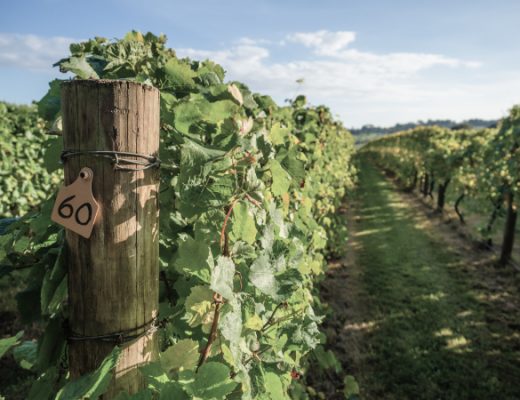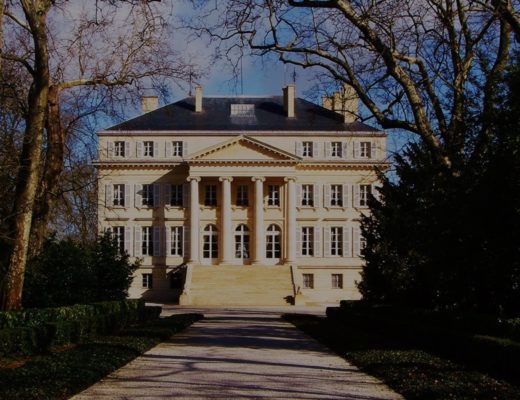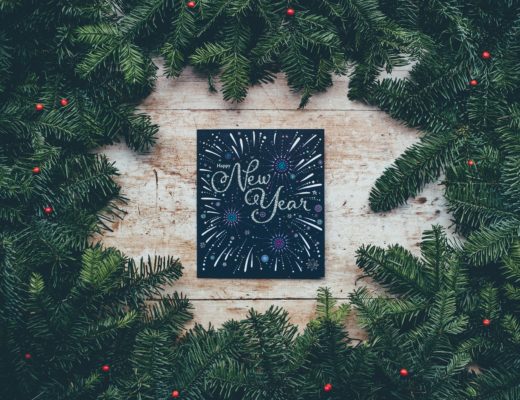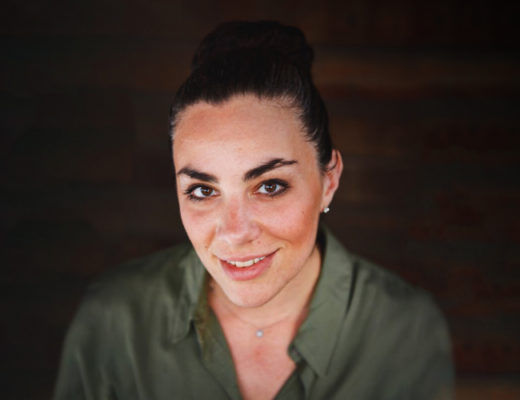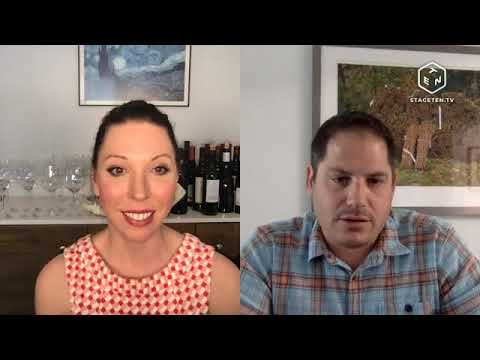It finally caught up with us on Monday, June 1. And we still can’t believe it. In 20 years, we can’t recall a week that didn’t involve either a long drive north or south along California’s iconic highways, a quick flight to Oregon or Washington, or a long haul trip to Bordeaux or New Zealand.
And yet, the proof was sitting right on the table in front of us—brand new Penguin paperback notebooks, still new as of that Monday in June. Not a scuff, no pages stained by espresso cup rings, and no frantically scribbled tasting notes within. The appointments in our calendar—cleared, since March.
So, instead of pulling out our laptops that Monday, we retreated into a sunny backyard in Napa. We filled an ice-bucket, dropped in two bottles of Champagne, grabbed some flutes, and dropped into chairs to leaf through old notebooks. We needed to take a trip, and to be reminded of the thrill of dashing from appointment to appointment, from cellars to vineyards, mountaintops to river basins, and of all our incredible friends out there—on the California wine trail.
PART ONE: CENTRAL COAST AND THE “GANG OF THREE”
Until you’ve made the trip, it’s almost impossible to believe that the most diverse wine growing region on planet earth exists in the space between San Francisco and Los Angeles. We know the highways, interstates, and back-country roads like the palm of our hand.
And we’ve trekked through iconic vineyards like Sanford & Benedict in the Sta. Rita Hills, and experimental blocks planted by Pete Stolpman in the Ballard Canyon AVA. We’ve spent far too long in Joey Tensely’s tasting room in Los Olivos, and probably overstayed our welcome in the refreshingly cool, and incredibly aromatic cellars at Dragonette in Buellton with Brandon Sparks Gillis.
Between Pete, Joey, and Brandon—our Central Coast “Gang of Three”—just about every California grape variety finds some distinct expression and style that never fails to surprise us. Flipping to one visit, we filled an entire page writing about Dragonette’s Seven Syrah—
A plethora of violets, lavender, blackberry preserves, smoke, incense, and spice box aromas abound. Rich and mouth-filling with supple tannins, soft acidity, and loads of blackberry, black plum, thyme, crushed rock minerality, and game…
On and on. After all, Brandon spent time working in the cellars at Sine Qua Non, absorbing everything he could from Manfred Krankl whose “Syrah begs to be compared with the greatest of France, California, and Australia,” according to Robert Parker.
Just reading our notes, had us longing for another visit. Wine Access head of wine and Master of Wine Vanessa Conlin has spent many afternoons at Dragonette. “I had no idea until I actually visited how varied and extreme the region is,” she said, taking in some rays of sun. “Compared to other wine-growing regions it’s kind of a throw-back in terms of low-key tasting rooms and down-to-earth mentality,” she said to a round of heads nodding in agreement.
On any given visit to the Central Coast, failing to drop into either Stolpman or Tensely in Los Olivos—the tasting rooms are kitty-corner to one another—is like failing to stop by the Sistine Chapel on a visit to the Vatican City. And we’ve made many-a-pilgrimage to both Stolpman and Tensely. Flipping to a page in one book from 2012, we came upon this entry:
Three nights ago, we piled out of our Montecito beds at 12:30am to join the Stolpman team on the night harvest of 2012. With miner’s lamps strapped to foreheads, harvesters moved like fireflies on the hillside, gingerly clipping clusters before each bunch was sorted once in the vineyard before a second sorting in the winery. It was a night to remember…
That night we helped harvest grapes for “La Cuadrilla” a red blend crafted each year by Ruben Solorzano, the Mexican-born viticulturist who started working for Tom Stolpman (Pete’s dad) in 1994. Each year, Ruben and his team choose a couple of acres almost anywhere on the property, farm the grapes to their specifications, harvest, and make the wine themselves.
Then there’s Joey Tensley, a winemaker whose bottles are both critical and crowd favorites. Ask how he manages to keep prices south of $30—while racking up numerous impressive 95- to 99-point reviews from Robert Parker’s Wine Advocate—and all you get is his aw-shucks Bakersfield farm boy shrug.
The California native started Tensley Wines in 1998, carving out a niche in Santa Barbara Syrahs, especially those off the treasured 16-acre Colson Canyon Vineyard. Within a few years, his releases were landing on Wine Spectator’s list of Top Ten Wines in the World. It was just the beginning of an epic run of critical acclaim, which has included a near-perfect 99-point score from Robert Parker and a commendation from Food & Wine for making the Best Syrah over $20.
We polished off the Champagne and called it a day, vowing to fill those books before the year was out.
There’s a world of exploration in the Central Coast, and we always tell Pinot Noir and Chardonnay lovers of Napa and Sonoma to check out Southern California’s renditions but don’t stop there—Northern Rhône Syrah fans will be blown away by the similarity from Ballard Canyon Syrah, and Southern Rhône diehards will find a new friend with extra oomf, by investing in Paso Grenache or Mourvedre.
Try:
Foxen WineryBlock 43 Bien Nacido Pinot Noir Santa Maria Valley
Tensley All Blocks Estate Blend Santa Barbara County
Ojai Vineyard Pinot Noir Fe Ciega Vineyard Santa Rita Hills
Dragonette Cellars Pinot Noir Sta. Rita Hills
PART TWO: THE GEEKY STUFF—WHY WE LOVE THE CENTRAL COAST
In Santa Barbara County, Pinot Noir is the most-planted red grape, with Syrah coming in second at roughly 1,930 acres planted—and perhaps surprising to most, that’s 1,000 more acres than Cabernet Sauvignon, which hovers around 780 acres. For whites, Chardonnay is the reigning champion at an astounding 7,720 acres, with second-place Sauvignon Blanc trailing at just 830 acres.
But ask us to name our favorite grapes from the Central Coast and we’d have to admit that we’re suckers for the Pinots and Chards, and serial collectors of the region’s top Syrah wines, Rhône blends, and Zinfandels.
The Pinots and Chardonnays from Sta. Rita Hills AVA (roughly 45 minutes north of Santa Barbara) owe their brilliance to the diatomaceous earth soils, which are made up of fossilized sea creatures. It is much like chalk soil in that it provides the perfect balance of drainage and water retention. By contrast, the Santa Maria Valley further north along highway 101 is quite unique in that it is an east-west funnel-shaped valley, which pulls in cool ocean breezes from the Pacific, allowing grapes to retain their racy acidity while the long growing season allows for full phenolic ripeness.
Rhône varieties like Syrah and Grenache flourish in Santa Barbara’s Ballard Canyon AVA (in the Santa Ynez Valley) and also further north in Paso Robles. The sandy soils atop limestone deposits in Ballard Canyon call to mind areas of France’s Rhône Valley, and although there are large diurnal shifts in temperature (like in Napa Valley), the climate is mitigated by Pacific Ocean breezes, allowing Rhône varieties, and also Bordeaux varieties to achieve phenolic ripeness while retaining freshness.
“I spent probably months of my life trekking around Paso’s ‘West Side,’” says VP of Wine Neil Mechanic. “The ‘West Side’ is unique for its mostly calcareous soils that emit excellent mineral cut in the wines. This is a saving grace for a region that sees extremely hot days during the summer and early fall months.”
The area has extreme diurnal shifts from the daytime high temperatures to the night time lows extending the growing season and providing excellent fruit maturity with healthy acidity levels. The Syrahs, Rhônes blends, and Zinfandels are typically dark, inky, and concentrated from beginning to end, so we always tell lovers of Lodi Zin or Napa Zins to head south to Paso where they’ll find nuances of cured meat, minerality, and dark “black n’ blue” fruit, as Mechanic puts it.
PART THREE: HEADING NORTH TO SANTA CRUZ, SONOMA, AND MENDOCINO
The Santa Cruz Mountains are an hour north of the Santa Lucia Highlands, smack on the northern tip of the Monterey Bay. This is coveted ground—home to Paul Draper’s Ridge, Martin Ray, and Clos de la Tech.
It was 1962 when Ridge produced its first Monte Bello wine, the world-famous estate perched at 1,300 to 2,700 ft. on the Santa Cruz mountains, 15 miles from the Pacific. Draper wouldn’t come aboard as winemaker until 1969. But fast-forward to the Judgement of Paris tasting in 1976, and the fireworks show is just beginning: Draper’s 1971 Monte Bello (100% Cabernet Sauvignon at 12.2% a.b.v.!) comes in 5th place, besting Château Leoville Las Cases, Heitz Martha’s Vineyard, Clos Du Val Winery, Mayacamas Vineyards, and Freemark Abbey Winery.
The Santa Cruz vineyards are perched at some of the highest elevations in California, and heavy influences from the Pacific Ocean, coupled with vines rooted in a mix of decomposed clay, loam, and limestone soils that are mineral-rich imbue wines with energy, life, and elegance. “For me, the Pinot Noir and Syrah expressions emerging from Santa Cruz are the ultimate examples of stamina and purity,” says VP of wine Eduardo Dingler, who drew an “Amen” out of Mechanic. Lovers of Rhône and Burgundy varieties may want to invest time exploring bottles from Santa Cruz.
We’ve spent a good amount of time in Santa Cruz, but our notebooks on the Sonoma Coast AVA could fill a 20-volume Britannica set. And Master Sommelier Sur Lucero has personally set foot on just about every single patch of land there. Chardonnay and Pinot Noir grapes form the heart and soul of the Sonoma Coast. The rolling hills, rugged coastal terrain of the Russian River Valley, and Green Valley sub-appellation lay claim to some of California’s greatest vineyards and legendary producers. A few years ago, we wrote:
Steve Kistler’s wound-up Montrachet-like Chardonnays are bottles that tend to be closed-up on release, often unwinding only after 5-7 years in bottle. On the highest perches of the Sonoma Coast, where Goldridge soils and the cool breezes off the Pacific give birth to bombastic, ripe-citrus Chardonnays, Luc Morlet and his brother Nicolas at Peter Michael rule the roost. But when it comes to walking the tightrope between youthful accessibility and Burgundian age-worthiness, David Ramey is in a class all his own.
Put a bottle of Ramey in front of us, and Goodnight Irene. We can’t get enough. For almost two decades, Ramey has been crafting exquisite Chardonnays from select blocks of Hyde, Hudson Vineyards, and Platt Vineyard, to name just a few. Those same sites are favorites of the Kongsgaard, Arietta, Rudis, and Patz & Hall.
According to Lucero, there are three reasons that the western portion of Sonoma Coast has attracted—and helped create—some of California’s greatest producers. “First, you have uplifted marine seabed soils known as Gold Ridge,” he explains, which have excellent drainage. “Second, the moisture in the air from the ocean prevents a lot of the dehydration faced by more inland areas,” and lastly, you have cooling influences off the pacific breezes. These factors influence vine metabolism in ways that allow for a wide range of styles to be made from the area.”
Burgundy is Burgundy, but California producers are crafting Burgundian-style wines with such accuracy, even the French are finding themselves fooled these days. If you’re a Burgundy stalwart, give Sonoma Coast Chardonnay and Pinot Noir a try.
Try:
Williams Selyem Pinot Noir Sonoma Coast
Martin Ray Vineyards & Winery Pinot Noir Sonoma Coast
DuMOL Syrah Wild Mountainside Russian River Valley
Ridge Vineyards Lytton Springs Blend Dry Creek Valley
Dutton-Goldfield Chardonnay Walker – Hill Vineyard Green Valley of Russian River Valley
But you can’t ignore what’s going on in the Mendocino County AVA—a hotbed of activity for rather Old World-styles of Pinot Noir and Chardonnay, in both still and sparkling renditions.
Mendocino is known throughout California for having the coolest micro-climate, especially in the areas along the Navarro River like the Anderson Valley, Potter Valley, and Redwood Valley.
“The cooling ocean winds and fog from the Pacific are funneled up the river valleys,” explains VP of wine Robert Emery, “bringing the temperature down. Coupled with the northern location, it gives the ideal temperatures for growing elegant, refined, lighter-bodied expressions of Pinot Noir and Chardonnay. Both are also used to produce some of the best Champagne-style sparkling wine in the state.” As a result, Champagne lovers will find exciting new (and affordable) options by simply looking north of Sonoma.
Try:
Meyer Family Cellars Syrah Yorkville Highlands Mendocino County
As for the Epilogue to this much-needed California Road trip down memory lane, those pages are being filled—right now.

